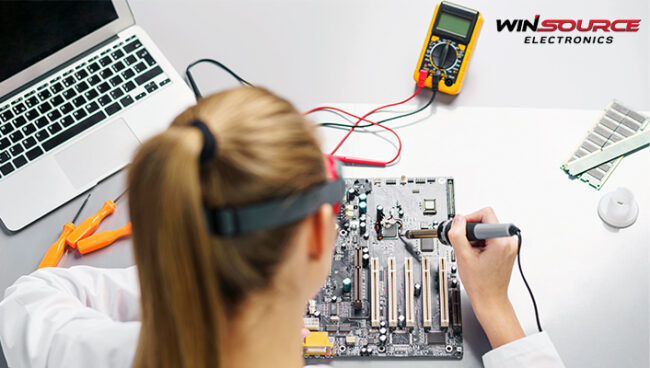
In a rapidly evolving technological world, electronic components are the building blocks of our modern devices. From smartphones and computers to complex industrial machinery, the perfect performance of these components is critical. Behind the scenes, however, lies a highly complex and intricate process: testing electronic components. This article aims to reveal the complexities of testing these components and shed light on the challenges manufacturers and engineers face in ensuring their reliability, quality and functionality.
Table of Contents
ToggleSignificance of testing electronic components
Electronic components are susceptible to a variety of factors that affect their performance, including manufacturing variances, environmental conditions, and electrical stress. The process of testing these components is critical as it enables manufacturers to identify defects, ensure compliance with specifications and meet industry standards. By conducting thorough testing, manufacturers can reduce the risk of component failure or failure, thereby improving the overall quality and longevity of electronic equipment.
Diverse and complex components
Testing electronic components covers a wide range of devices, each with its own unique characteristics and capabilities. For complex electronic components, several types of tests may be required to ensure compliance with specific standards and specifications. These test items may involve different parameters and characteristics, including voltage, current, frequency, power consumption and temperature, etc. Each test item requires precise measurements and analysis to ensure components perform as expected. Integrated circuits (ICs), transistors, diodes, capacitors, resistors and many other components require specialized test procedures tailored to their specific properties and intended application. The increasing complexity of these components requires advanced testing methods to meet the demands of an ever-evolving technology field.
Various testing techniques
Testing electronic components involves employing a variety of techniques to assess their performance and reliability. These techniques include:
a) Functional testing: Verifies that the component functions correctly according to its intended purpose.
b) Parametric testing: Evaluate the electrical characteristics of components such as voltage, current, frequency and resistance according to predefined specifications.
c) Environmental testing: Subjecting components to different environmental conditions such as temperature, humidity, shock and vibration to ensure their resilience and suitability for various applications.
d) Lifecycle testing: Simulates the expected usage conditions of a component over an extended period of time to assess its durability and reliability.
e) In-Circuit Testing: Evaluates components integrated into the board to ensure they function properly in the larger system.
Rapid technological progress
The relentless pace of technological advancement presents significant challenges to testing electronic components. As new and advanced components enter the market, test methods must keep pace with smaller form factors, higher data rates, higher power densities and new materials. Test equipment and technology need to evolve continuously to accommodate these advances and ensure accurate and reliable results.
Processing and analysis of test data
Testing electronic components generates large amounts of data that need to be processed and analyzed efficiently. This includes collecting, recording and storing test results, performing data analysis and trending to assess component reliability and consistency. A sound approach to data management and analysis is critical to the success of the testing process.
Time and cost considerations
Testing electronic components can be a time-consuming and resource-intensive process. Component complexity, the need for specialized test equipment, and the need for skilled personnel all add to the overall cost and duration of the testing phase. Balancing the need for comprehensive testing with production plans and market demands can be a delicate task that often requires effective testing strategies and optimization techniques.
Ensuring Quality and Reliability
In addition to functional testing, ensuring the quality and reliability of electronic components is also crucial. Compatibility testing ensures components work seamlessly with other system elements, while reliability testing evaluates their ability to perform consistently under a wide range of operating conditions. These additional layers of test complexity add to the overall challenge of ensuring the robustness and lifetime of electronic components.
In summary, testing electronic components is a complex process that plays a vital role in ensuring the reliability, quality and functionality of electronic devices. The complexity of these components, combined with rapid technological advancements, creates ongoing challenges for manufacturers and engineers. By employing diverse testing techniques, adapting to technological advances, and optimizing time and cost considerations, manufacturers can overcome these complexities and provide electronic components that meet our growing demands

COMMENTS